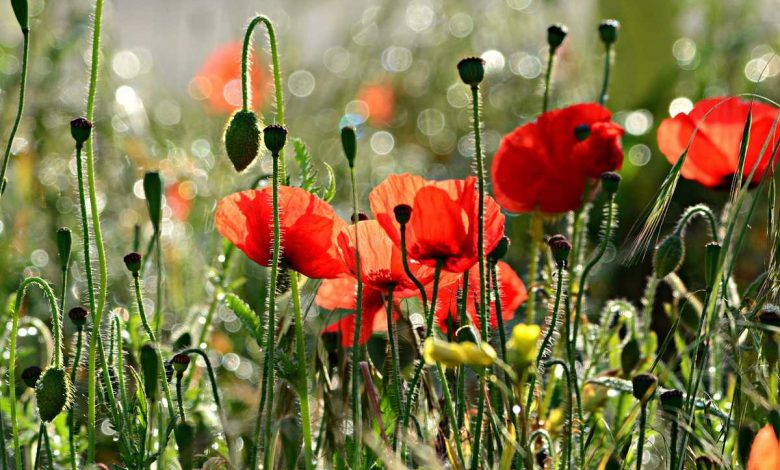
Annual flowers are sown directly in place in the spring. They then grow very quickly and flower in just a few weeks. So do not hesitate to sow them to occupy your beds in full sun and offer you many flowers to compose beautiful bouquets. And, icing on the cake, in autumn, the seeds fall to the ground, which allows young plants to appear earlier the following year. Discover in this article our 8 ideas for annual flowers to sow as soon as possible, as soon as spring returns.
Cosmos, Cosmos bipinnatus
Essential, these annual flowers of American origin bloom for many months. There is a wide variety of varieties of cosmos:
- with single or double flowers
- Solid color or two-tone
- Dwarf varieties, ideal for growing in pots
- Middle cosmos and higher ones.
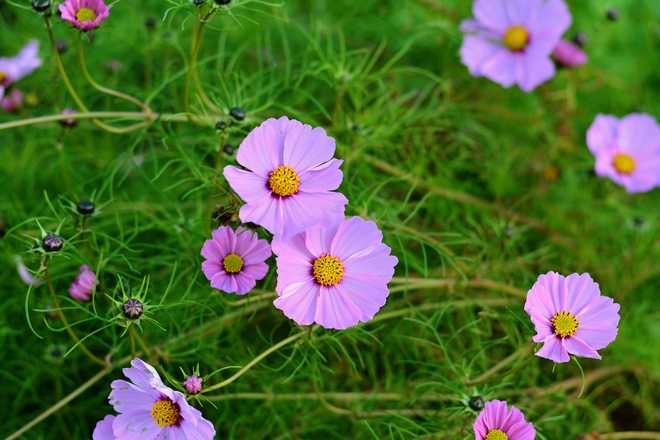
All like full sun and deep, light, even poor soil. Once launched, they tolerate drought very well so that you don’t have to take care of them anymore!
Moreover, the sowing of cosmos is very easy to carry out, in place or even in a bucket!
Annual Lavatera, Lavatera trimestris
There are also many varieties of one-quarter lavatera: dwarfs, compacts… But the most beautiful are for us the tallest, which culminate at more than 1 m in height.
All are very easy to grow, almost foolproof. They offer funnel-shaped flowers with entirely pale or bright pink petals, often nicely streaked. You can even sow a variety with white, bright flowers, but it is a bit bland.

The annual lavatera likes the sun but tolerates partial shade. It also appreciates a rich, light, well-drained soil.
Gardener’s tip: Do not hesitate to stake the tallest varieties to prevent them from collapsing. You can use fine hazel saplings for this.
Queen daisy, Callistephus sinensis
With single, double, flat flower or pompom varieties, in many colours, these annual plants are essential for making bouquets.
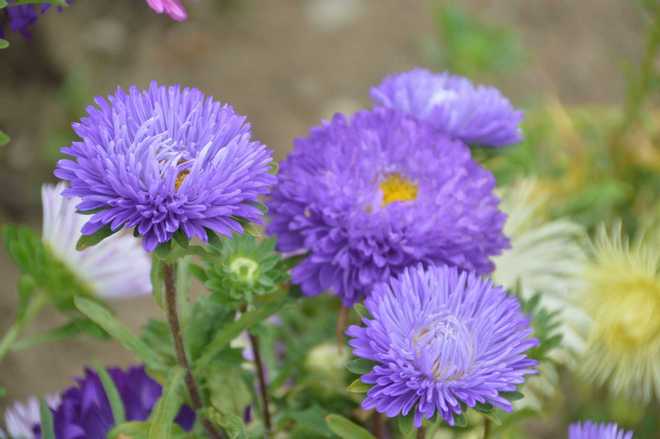
Queen Marguerite likes humus-rich, well-drained soils but is less demanding than the other annuals in this selection and grows on all soil types and in all situations.
To prolong its flowering until autumn, it is necessary to regularly remove faded flowers.
Marigolds, Calendula officinalis
Growing marigolds in the garden is precisely not having flower marigolds! Calendula officinalis often flowers very early, from January or February when the winter is mild, but also very late! This ensures 10 months out of 12 of flowers in the gardens of the South!
For the rest, these annual plants reseed themselves from one year to the next in the beds without having to worry about it, except to contain them because they often overflow on the lawn or in an alley.
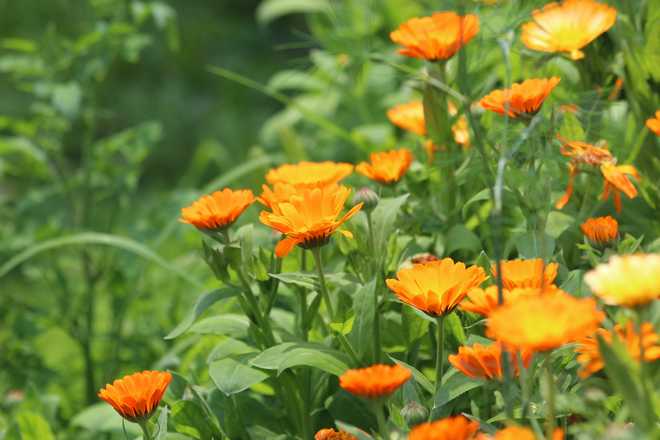
The most classic marigolds are yellow or orange, but there are varieties with amazing, copper colors. Dwarf marigolds can be planted in borders.
All like full sun and ordinary but well-drained garden soil. They tolerate drought very well.
The gardener’s tip: Marigolds are so easy to succeed that you should not hesitate to abuse them! Sow them everywhere but prefer sowing directly in place to transplanting young plants because they have difficulty supporting it.
Cornflower, Centaurea cyanus
Field blue (its other name) is a classic annual of spontaneous flowering meadows. Easy to grow, this plant has very branched stems.
Originally, its flowers were blue but more recent varieties have appeared, with white, pink or purple flower colors. Some are high (about 1 m), others lower.
Cornflower likes well-drained soil and a place in full sun.
Its only small defect concerns its short flowering period since it generally does not exceed one month!
Nasturtiums, Tropaeolum
Hard to find easier to grow! The nasturtium forms clumps of rounded leaves, which are very beautiful when covered with large droplets after a rain.
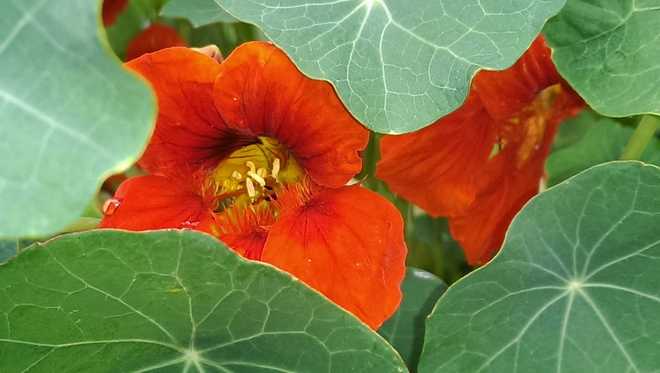
Its large black seeds are sown in pockets of 2 to 3 seeds per hole. There are ground-covering varieties, ideal for filling holes in a sunny bed, or climbing ones to run on a stake or a fence.
The delicate flowers of the nasturtium are otherwise edible.
Beautiful, good and useful, these are 3 words that sum it up perfectly!
Gardener’s tip: Soak the seeds of the nasturtium for a few hours in water before sowing to speed up germination.
Garden poppy, Papaver somniferum
In the sun, its large, delicate flowers with large pink, white, red or orange corolla cause a sensation! They have a large black macula at the base and culminate at a height of about 80 cm.
The very fine seeds of the garden poppy must be sown rather superficially in a soil that is not too rich, or even poor. Once in place, this annual plant then reseeds itself enormously, taking advantage of the smallest space of bare earth.
The flowering period, between the end and the beginning of July, is short, but difficult to do without!
Damascus nigella, Nigella damascena
Everything is beautiful about this annual plant: its finely cut leaves, its well-inflated flower buds, its light, delicate, graceful and airy flowers, then its swollen capsules overflowing with seeds!
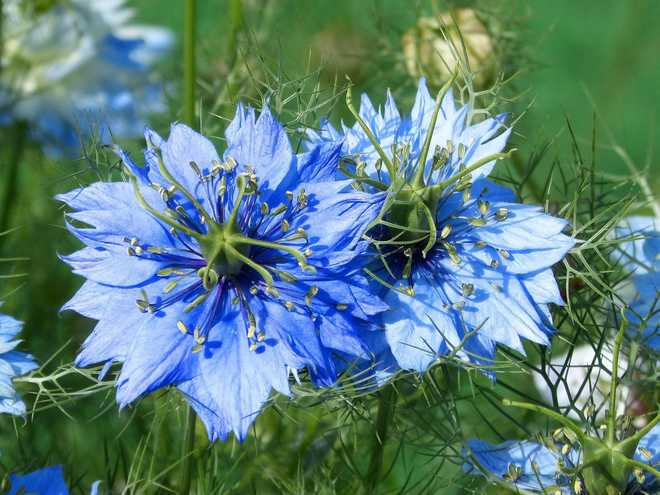
As the seeds of the nigella of Damas resist well to the cold, a first sowing is possible as of March. Once the seedlings have started, no maintenance is required!
In terms of cultivation, Nigella damascena likes full sun and light, well-drained soil.
The gardener’s tip: Flowering being quite short-lived, do not hesitate to sow nigella several times during the spring to make them succeed one another!
California poppy, Eschscholtzia californica
This is another essential annual flower in any garden as it blooms continuously, almost all year round!
The California poppy finds an ideal place as a filler in beds in the sun, or to form an elegant low border at 30 cm – 40 cm in height, or even in pots where its gray-green cut foliage works wonders!
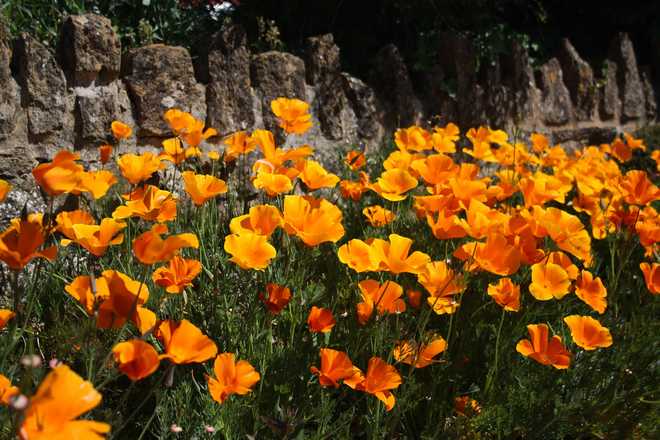
Its orange flowers with silky petals are luminous, a marvel!
Eschscholtzia californica loves full sun and above all, poor, light, well-drained, even calcareous soil! It grows better…
Other annual or perennial flowers that reseed themselves in the sun
To accompany this selection of annual plants, don’t hesitate to associate them in your sunny beds with garden valerian, lady’s mantle, Teucrium hircanum, horned violet, cockle, bronze fennel, broth-white mullein , morning glory, sea alyssum, all carnations , evening primrose , chamomile or even larkspur…
All of these annual, biennial or perennial plants also reseed themselves in abundance!
